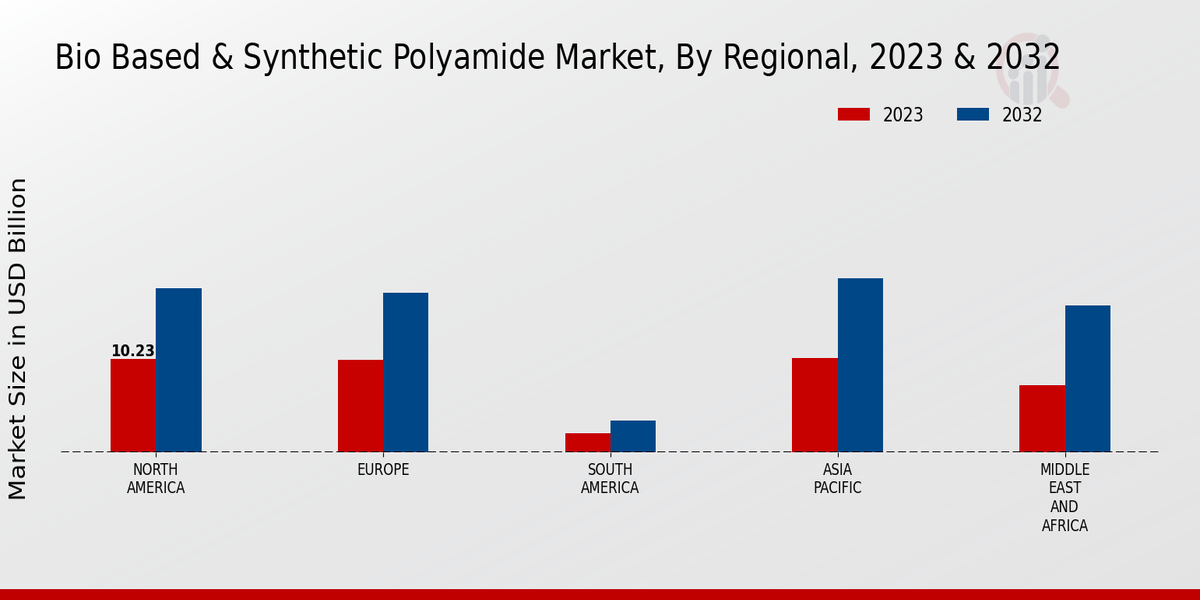Bio Based Synthetic Polyamide Market Summary
The Global Bio Based Synthetic Polyamide Market is projected to grow significantly from 13.90 USD Billion in 2024 to 29.63 USD Billion by 2035.
Key Market Trends & Highlights
Bio Based Synthetic Polyamide Key Trends and Highlights
- The market is expected to experience a compound annual growth rate (CAGR) of 7.12 percent from 2025 to 2035.
- By 2035, the market valuation is anticipated to reach 29.6 USD Billion, indicating robust growth potential.
- in 2024, the market is valued at 13.90 USD Billion, reflecting a strong foundation for future expansion.
- Growing adoption of bio-based materials due to increasing environmental awareness is a major market driver.
Market Size & Forecast
| 2024 Market Size | 13.90 (USD Billion) |
| 2035 Market Size | 29.63 (USD Billion) |
| CAGR (2025-2035) | 7.12% |
Major Players
DuPont de Nemours, BASF, Solvay, DSM, SABIC, Radici Group, Arkema, Kuraray, Toray Industries, Hexcel, EMS Group, Lanxess, Evonik, Covestro, Teijin
























Leave a Comment